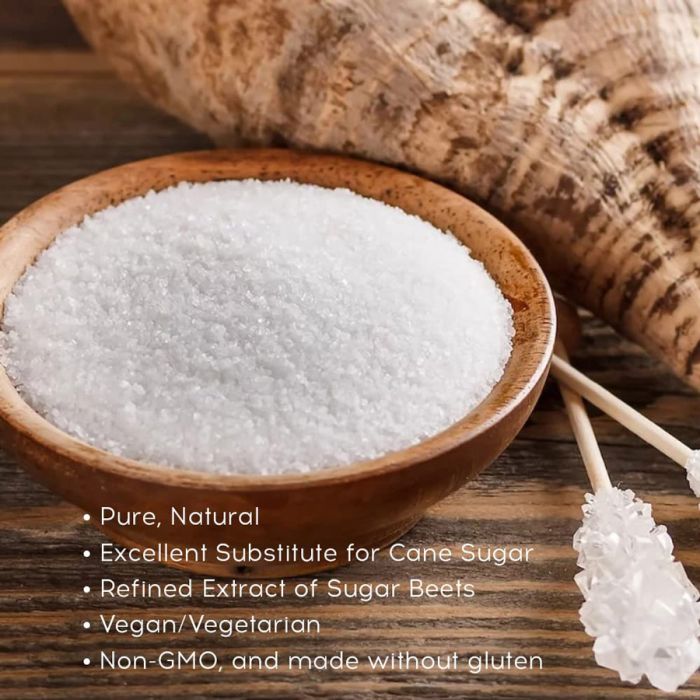Many consumers wonder if beet sugar vs cane sugar makes a difference in nutrition.
Many consumers wonder if beet sugar vs cane sugar makes a difference in nutrition.
Blog Article
Discover the Uses and Perks of Beet Sugar Vs Cane Sugar in Your Daily Diet Plan
Exploring the unique qualities of beet and cane sugar exposes even more than just their sweetening capacities; it highlights their unique effect on wellness and culinary arts. Beet sugar, understood for its refined flavor, is usually favored in delicate treats, whereas cane sugar, with its tip of molasses, adds splendor to durable dishes. Each type holds its very own dietary profile and glycemic implications, welcoming a much deeper understanding of their roles in a balanced diet plan and lasting consumption practices.
Origin and Manufacturing Procedures of Beet and Cane Sugar

The unique environments and dirt kinds required for growing sugar beets and sugarcane add to distinctions in their cultivation practices and geographic circulation, affecting the business economics and sustainability of their manufacturing. beet sugar vs cane sugar.
Nutritional Comparison Between Beet Sugar and Cane Sugar
In spite of stemming from various plants, beet sugar and cane sugar are nutritionally really comparable, both primarily consisting of sucrose. Each supplies regarding 4 calories per gram, converting to roughly 16 calories per teaspoon. Structurally, both sugars are composed of around 99.95% sucrose, with marginal amounts of other materials like dampness and trace minerals, which do not considerably modify their dietary profiles.

Inevitably, when picking in between beet sugar and cane sugar based on nutritional content alone, both offer similar advantages and disadvantages as they are basically kinds of the very same particle-- sucrose, providing quick energy without other nutrients.
Influence On Wellness: Glycemic Index and Caloric Material
Discovering additionally into the impacts of beet sugar and cane sugar on health, it is vital to consider their glycemic index and caloric content. The glycemic index (GI) of both beet and cane sugar is around 65, classifying them as high-GI foods, which can cause fast spikes in blood glucose levels.
Each kind of sugar consists of around 4 calories per gram, making their calorie content matching. For those keeping an eye on calorie consumption, specifically when managing weight or metabolic health conditions, comprehending this equivalence is crucial (beet sugar vs cane sugar). Excessive usage of any kind of high-calorie, high-GI food can contribute to health and wellness problems such as excessive weight, heart condition, and insulin resistance.
Environmental and Economic Considerations of Sugar Manufacturing
Beyond health effects, the manufacturing of beet and cane sugar additionally increases considerable environmental and financial problems. Sugar beet growing tends to call for cooler climates and has a reduced geographical impact contrasted to sugar cane, which grows in tropical regions. Both plants are extensive in terms of water use and land line of work, potentially leading to deforestation and water deficiency. Financially, the worldwide sugar market is extremely volatile, influenced by modifications in global trade policies and aids. Many countries incentivize sugar manufacturing through financial backing, skewing market value and affecting small farmers adversely.
In he said addition, using pesticides and plant foods in both beet and cane sugar cultivation his explanation can result in soil deterioration and pollution, further influencing biodiversity and neighborhood water bodies (beet sugar vs cane sugar). The choice between growing sugar beet or cane often rests on neighborhood ecological conditions and financial factors, making the sustainability of sugar production a complicated concern
Culinary Applications and Flavor Distinctions
While the ecological and financial elements of sugar manufacturing are undoubtedly significant, the selection in between beet and cane sugar additionally affects culinary applications and flavor profiles. Beet sugar, derived from the sugar beet plant, is understood for its remarkably neutral preference.
Walking stick sugar, removed from sugarcane, often maintains molasses traces, which present an unique splendor and deepness. This mild molasses taste improves the complexity of baked goods, sauces, and sauces. It is particularly favored in products where a sugar undertone is wanted, such as in brownies or gingerbread. The minor variation in moisture content between beet and cane sugar can affect the texture and uniformity of dishes, making cane sugar a preferred choice for specific recipes that profit from its distinct residential or commercial properties.

Conclusion
To conclude, both beet and cane sugar have distinct origins and production procedures, providing comparable dietary profiles with small distinctions in salt web content and taste. While their influence on health, especially regarding glycemic index and calories, is similar, the selection in between them usually boils down to environmental, financial elements, and specific culinary needs. top article Understanding these facets can assist consumers in making informed choices that align with their wellness objectives and flavor preferences.
Report this page